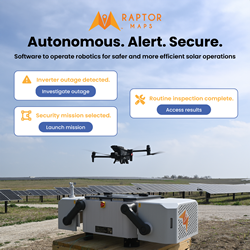New Jersey Solar Market Hits 1 Gigawatt Milestone
Net Metering Policy, Declining Costs Drive State Jobs, Installations
TRENTON, NJ The New Jersey solar market hit a new milestone this week when it eclipsed the 1 gigawatt (GW) mark for total installed solar electric capacity. This is enough solar electricity to power 139,000 homes. New Jersey now ranks third in the nation in solar energy installations, according to a new study released last week, thanks to declining system prices and the strong, consistent support from the state's policymakers, including its robust net metering policies and the U.S.' first Solar Renewable Energy Credit (SREC) program, an innovative market-based incentive for solar generation.
U.S. Solar Market Insight: Year-in-Review 2012, released by the Solar Energy Industries Association (SEIA®) and GTM Research found that New Jersey was responsible for nearly one-third of the nation's non-residential (government, business, and nonprofit) solar installations last year. In total, more than 415 megawatts (MW) of solar was added to the state's power grid in 2012, a 33 percent increase over 2011 (313 MW). New Jersey is the third state in the nation to the hit the 1GW solar mark, after California and Arizona.
New Jersey's robust net metering laws combined with its solar requirement are the main drivers behind its successful solar market. Add to this the continued dramatic declines in the installed cost of photovoltaics (PV), and New Jersey's solar industry is providing both in-state jobs – on the order of more than 5,700– and much needed in-state electricity generation.
"New Jersey policymakers and regulators have consistently been at the forefront, driving the state's solar market," said Carrie Hitt, senior vice president of state affairs for the Solar Energy Industries Association. "Although the New Jersey solar market has seen volatility, we are confident that New Jersey will continue to be a leader, both in innovating policy mechanisms to grow the industry and in installing solar to power homes and businesses."
Solar is the fastest-growing energy source in the U.S. The Solar Market Insight annual edition shows the U.S. installed 3,313 megawatts of solar PV in 2012, a record for the industry.
Due in large part to the falling cost of solar for consumers, the market size of the U.S. solar industry grew 34 percent from $8.6 billion in 2011 to $11.5 billion in 2012not counting billions of dollars in other economic benefits across states and communities. At of the end of 2012, there were 7,221 MW of PV and 546 MW of concentrating solar power (CSP) online in the U.S. -- enough to power 1.2 million homes.
The top 10 largest state solar markets by MW of PV installed in 2012 were:
1. California 1,033
2. Arizona 710
3. New Jersey 415
4. Nevada 198
5. North Carolina 132
6. Massachusetts 129
7. Hawaii 109
8. Maryland 74
9. Texas 64
10. New York 60
Key Report Findings
PV installations grew 76% in 2012 to reach 3,313 MW
There are now more than 300,000 PV systems operating across the U.S.
The U.S. installed 11% of all global PV in 2012, the highest share in at least fifteen years
Cumulative PV capacity operating in the U.S. as of the end of 2012 stood at 7,221 MW
There were over 90,000 solar installations in 2012, including 83,000 in the residential market alone
Weighted average PV system prices fell 27% in 2012, reaching $5.04/W in the residential market, $4.27/W in the non-residential market, and $2.27/W in the utility market
More Resources:
- U.S. Solar Market Insight: Year-in-Review 2012
- New Jersey Board of Public Utilities Statement, "Christie Administration Announces Significant Renewable Energy Milestone," March 19, 2013
About U.S. Solar Market Insight:
The U.S. Solar Market Insight: Year-in-Review 2012 report is the most detailed and timely research available on the continuing growth and opportunity in the U.S. The report includes deep analysis of solar markets, technologies and pricing, identifying the key metrics that will help solar decision-makers navigate the market's current and forecasted trajectory.
About SEIA®:
Established in 1974, the Solar Energy Industries Association® is the national trade association of the U.S. solar energy industry. Through advocacy and education, SEIA and its 1,000 member companies are building a strong solar industry to power America. As the voice of the industry, SEIA works to make solar a mainstream and significant energy source by expanding markets, removing market barriers, strengthening the industry and educating the public on the benefits of solar energy. www.seia.org
Featured Product

